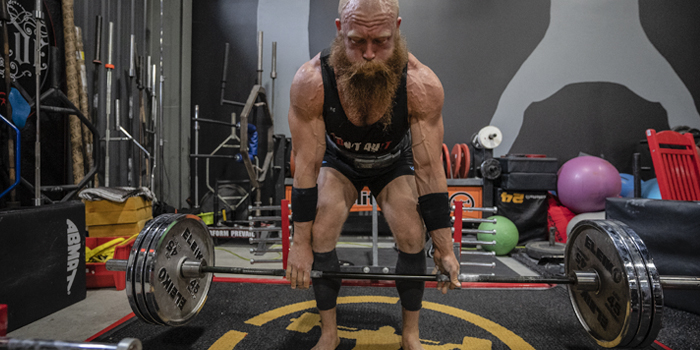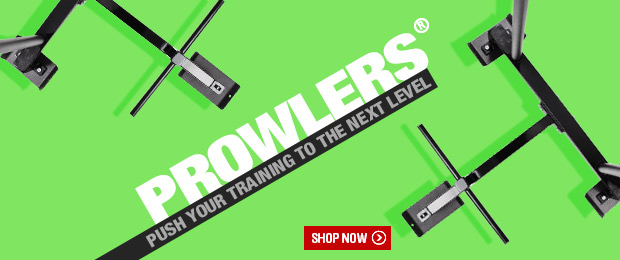
One of the most overlooked aspects of powerlifting today is conditioning. Unfortunately, many people don’t understand why they need it and don’t do it; this is a huge mistake, as it will inevitably lead to sub-optimal performance. Below we’ll discuss the whys and hows of conditioning for powerlifters.
Why You Need Conditioning
Many people take the stance that powerlifting is about being as big and strong as possible and that any kind of cardiovascular work detracts from those goals as it burns calories and thus energy. And this is patently false. Conditioning is crucial for improving one's work capacity. As you progress in your powerlifting career, you will have to do more work than you did previously to make gains; we know this as the law of accommodation.
This may mean you need more volume, frequency, intensity, or even different exercise selections to change the stimulus. But there is only one way to continually add to your program and continue making progress, and that is recovery. Your work capacity largely dictates your ability to recover.
You also need conditioning to make it through meets and perform at your best. I cannot tell you how often I’ve seen people peter out at meets as the day progresses. They become tired and weak as they fatigue, often bombing out, getting hurt, or at the very least, not performing nearly as well as they had hoped.
I once did a pro meet in Tennessee with around twenty-five lifters. The meet started at 10 am and was done by 2 pm. By the time we made it to deadlifts, the two flights had turned into one, and only ten people had made it to the deadlift. These were pros, and they couldn’t take the pace. What happens if you’re a beginner or intermediate and experience the same kind of day?
I’ve also been to meets where I squatted at 9 am and deadlifted at midnight; not an easy day to make it through for various reasons, but it still requires the ability to recover, which is accumulated through conditioning.
How Do We Do it?
No, I don’t want to see people running on a treadmill or peddling away on a stationary bike mindlessly. Don’t get me wrong; those things are often better than nothing. However, we can do something much more optimal for powerlifters.
Sled drags, and weighted carries are the kings of conditioning for strength athletes. By training with sleds and carries, you can handle significant weights and build muscular endurance in targeted muscle groups while increasing lung capacity and cardiovascular health. This all means increased work capacity and better recovery so you can train harder and progress more.
“How Do I Change My Programming?”
So, how do you incorporate these carries and drags into your training? This is especially true for those of us on a tight schedule. Powerlifting is a hobby sport, so the vast majority of us will only be able to treat it as a part-time job. Time consumption becomes a valid concern with all the training, eating, sleeping, stretching, soft tissue work, and everything else that goes into being a successful lifter. Here’s how we incorporate this conditioning work at the JAC, our small, private barbell club in mid-Michigan.
Offseason
After a meet, we’ll take several weeks away from the barbell completely. During this training phase, we’re primarily concerned with our conditioning as it typically does suffer from all the heavy singles and tapering off the higher rep accessory movements before your meet. Therefore, this is the perfect time to work on carrying and dragging heavy things.
In the earliest stage post-meet, we’ll do almost nothing that people consider traditional powerlifting, but instead, some light dumbbell work and a ton of carries and drags. We primarily use farmers' carries, forward and backward sled dragging, suitcase carries, and Powerpohll walks. We like distances of roughly sixty yards for powerlifters. This builds adequate conditioning while using heavy enough weights to continue building muscle and strength. I won’t get into all the variations of sled drags you can do in this article; you can find more about that here on elitefts.com. Just know the variations are plentiful, and you can have a lot of fun with them.
Meet Prep
Many people drop all conditioning work in the 10-12 weeks leading up to a meet. This is a massive mistake, as recovery is essential during this training phase. Having better conditioning will have you less fatigued between attempts which will not only allow you to be able to display strength better but will also make you less prone to injury.
Going into a heavy squat when your heart is beating out of your chest, you’re soaked with sweat, and your muscles aren’t firing optimally is dangerous, to say the least. The chances of your form breaking down and you experiencing an injury in this state are exponentially higher than if you’re better recovered. For this reason, we keep the carries and drags in the program. Here we substitute some of the smaller isolation movements that we all refer to as accessory work in favor of carries and drags.
A squat session, for example, may start with heavy singles on a squat variation, followed by a secondary compound movement to complement your first exercise and bring up a weak point. After this, instead of grinding away on leg curls, we’ll drag a sled forward from the back of our lifting belt. Instead of doing leg extensions or some other quad movement, we’ll drag the sled backward (this does wonders for the knees). We can substitute several movements with heavy farmers' walks as well. Farmers work your grip, traps, lats, erectors, glutes, and almost every muscle in your legs. They should be done heavily and often. You can also carry stones, sand bags, push a prowler, or do some jumps. There are plenty of options that you can pick to suit your needs.
Conclusion
By setting your training up in the ways I outlined above, you’re not adding any extra time in the gym but are instead doing more valuable movements with the time you already have allotted. The conditioning work will also allow you to do more sets and reps in the same period of time as your recovery increases.
I don’t think you’ll find anyone who says you'd be better off doing biceps curls than rowing a sled with a couple hundred pounds on it. Or you’d have better results from calve raises than from carrying a heavy stone or sandbag sixty yards for a few rounds.
So prioritize your time, and prioritize your conditioning. I assure you it will pay dividends in your powerlifting journey.

Zane Geeting is a competitive powerlifter with over 20 years of experience. He has achieved both raw and equipped elite totals across three weight classes. Zane also coaches several elite lifters from across the US and Canada.










2 Comments